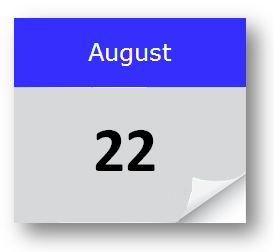In 1642 The English Civil War bagan.
On the 27th of March 1625 James I of the United Kingdoms died and his son Charles I became King aged 25.
On the 13th of June 1625 Charles Married a Catholic, Henrietta Maria of France which became a contributing factor in the belief of a royal plot to return the country to Catholicism. Added to this was the fact that he withdrew his forces from the Thirty Years War thus not supporting the Protestants of Europe. This union brought more religious tolerance for Catholics in Britain and this led many Puritans (Protestant Christians with strict religious beliefs) to flee for Ireland, New England, the West Indies and the Netherlands (with about 20,000 migrating to each destination between 1630 and 1640).
Charles I initially took a strong stance against the Catholic forces of the war but his momentum dwindled, gradually distancing Britain and Ireland from the conflict and by 1630 he had left the war. As a King he had a strong belief in his divine right to rule and believed he had no need for a parliament. In 1629 Charles disbanded Parliament with no intention of recalling it and his attempt to levy taxes without parliamentary consent made him many enemies within his own parliament.
Charles further alienated his people when he attempted to Anglicanise the Church of Scotland in 1639. He attempted to impose bishops on their church instead of their own church elders making their church more answerable to the crown. In 1640 parliament reconvened and Puritans within parliament attempted to pass policies to reform the church. This alarmed many Catholics and on the 23rd of October 1641 till May the following year the Irish rebellion took place. The predominantly Catholic populous rose up in anger, killing several thousand Protestants that had settled there. They demanded more religious freedom for Catholics.
As Charles and Parliament debated how to deal with the situation it became apparent that no compromise could be met. The country was split and for once Charles seemed to be gaining supporters in England.
On the 4th of January 1642 Charles, entered the houses of Parliament in order to arrest five members for treason. The MPs were Mr Holles, Mr Pym, Sir A Haslerig, Mr Hampden and Mr William Strode all of whom had fled the house upon the Kings Arrival.
On the 22nd of August 1642 Civil War broke out in England with predominantly the North and West supporting the King (“Cavaliers”) while the South and East including London supported Parliament (the “Roundheads”) led by Oliver Cromwell. By the middle of 1643 the Royalists were gaining ground and it looked like the Parliamentarians’ would loose. But the Parliamentarians’ made a military alliance with the Scots who sent troops to deafeat Royalists in the north and a year later Cromwell’s “New Model Army” defeated the Cavaliers at Naseby, Northamptonshire on the 14th of June 1645. Charles I headed for Scotland and handed himself in, hoping for better treatment than he would receive in England but the Scottish handed him over to the English Parliament.
King Charles was tried for treason and found guilty on the 30th of January 1649. He was beheaded on the 6th of February 1649. On the same day, Scotland, Ireland and many royalists in England proclaimed Charles’s son, Charles II of England Scotland and Ireland. This proclamation was condemned as illegal by the English Parliament who declared the end of the monarchy making England a Republic for the first time in its history.
Oliver Cromwell became army commander and Lord Lieutenant of Ireland, crushing any resistance including the massacres of Wexford in October 1649 where he killed 2,000 soldiers and 1,500 civilians. In 1651 Charles II, who was exiled on the death of his father, had been gathering support and an army in Scotland. On the 3rd of September 1651 Charles’s forces met with Cromwell’s army in battle.
Cromwell’s forces were triumphant and Charles fled for France. Cromwell proclaimed himself Lord High Protector of England in 1653 and began to establish Puritanism in England. He allied himself with France against Spain and at the Battle of Dunes on the 14th of June 1658 he defeated the Spanish forces. On the 3rd of September 1658 Oliver Cromwell died and his son Richard became Lord High Protector of England.
On the 25th of May 1660 Charles II returns to England by invitation and takes his place as King of England, Scotland and Ireland. The republic of England is over after 11 years in what is known as “The English Restoration”. He has all involved in his fathers death tried for regicide (Except the executioner who wore a mask keeping their identity secret).
On the 30th of January 1661 Cromwell’s body was exhumed and beheaded. His head was placed on a spike outside Westminster until 1685 as a warning.
